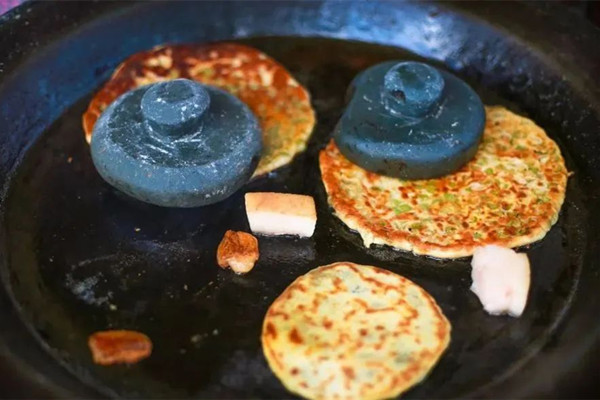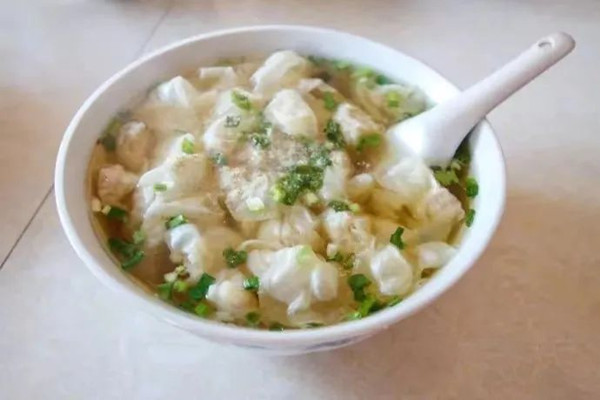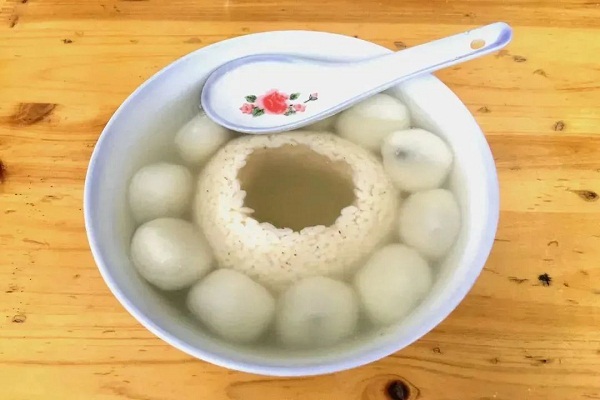Yuliang village – administered by Shexian county, in Huangshan city, Anhui province – was the place where the celebrated Huizhou merchants departed on their business trips.
The Huizhou merchants, accounting for almost half of China's wealth from the late Ming Dynasty (1368-1644) to the early Qing Dynasty (1644-1911), created not only a prosperous commercial environment but also a varied and lively food culture there. Here are some of the local delicacies.
Yuliang stone pastry

A stone is placed on the pastry to ooze out excessive grease and make it evenly heated. [Photo/WeChat ID: cnhsta]
Stone pastry was a staple in the diet of the Huizhou merchants for hundreds of years.
With a wide variety of fillings – such as the diced pork, bamboo shoots and chives – it tastes deliciously crispy on the outside and the ample fillings give off a wonderful aroma.
Yuliang wonton

A bowl of delicious Yuliang wonton. [Photo/WeChat ID: cnhsta]
Wonton, or "Hun Dun" in Mandarin, is always a highly popular dish in China.
Yuliang wonton is famous for its extremely thin skin, tender fillings and tasty soup. The main ingredients are pork, vegetables and green onions. A spoonful of chili paste makes it even more appealing.
Yuliang Jiuniang

Yuliang Jiuniang, served with glutinous rice balls. [Photo/WeChat ID: cnhsta]
Jiuniang, or fermented sweet rice wine, is actually unfiltered rice wine with very low alcohol content.
Folks in Yuliang village follow the ancient process of making the soup-like dish. They use high-quality glutinous rice and mountain spring water and brew it through more than 10 procedures.
The fermented sweet rice wine tastes sweet and is popular in all seasons.

